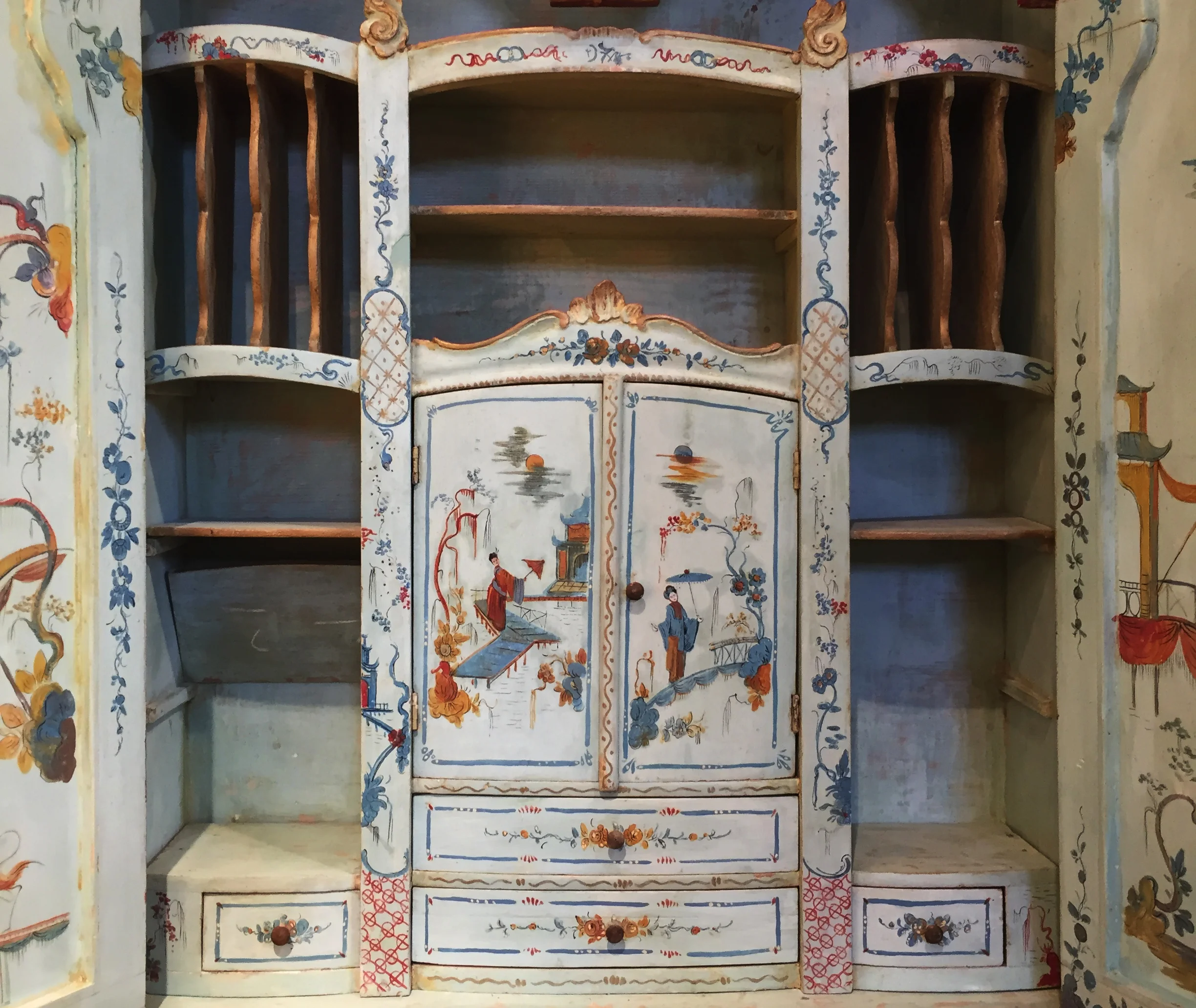What is Chinoiserie?
Chinoiserie, a French word for "Chinese-esque," refers to European decorative art that was inspired by objects and stories brought back from the Middle East and Asia. It was most popular during the 1600s and 1700s, but there are many Dallas interior designers who are fans of this style to this day. Although Chinoiserie sounds like it should be primarily based on Chinese design, the style also owes its look to Indian, Persian, Korean, and Japanese art.
History of Chinoiserie
Trade between Europe and Asia was open through the Silk Road beginning in the 1200s. Hand-painted porcelain, wallpaper, silks, and lacquered furniture were among the items brought back. In the year 1292, Italian merchant Marco Polo left China, where he had lived for 17 years, to return to Venice. Although Marco Polo was not the first westerner to travel to China, he was the first person to publish a manuscript about what he saw there: The Travels of Marco Polo. Europeans were astonished by what they read.
For westerners, owning expensive fabrics and ceramics from Asia became a status symbol. The demand for Asian imports outstripped the existing supply, so European artisans learned to make their own imitations. These pieces were a mixture of actual Asian design features and pure European whimsy. One example would be pastoral scenes, which are typically a Rococo motif depicting European nobility. In Chinoiserie, the artist would illustrate the Chinese Emperor and court instead. Since Chinoiserie was in vogue during the same period that Rococo was, the two styles share some similarities: asymmetry, scroll forms, and fantastical imagery.
The earliest examples of Chinoiserie were Italian, such as the silks produced by Lucca factories. Over time, different countries in Europe popularized different kinds of Chinoiserie. Germany specialized in porcelain figurines. The Netherlands is still famous today for its Delft pottery factories. Meanwhile, England produced silver, tapestries, and embroidery with Chinoiserie motifs.
Chinoiserie's popularity reached its height in the mid-1700s, eventually giving way to neoclassicism's cool restraint. One hundred years later, the style made another comeback during the Rococo Revival. European nobility commissioned interior designers to create entire rooms for displaying their Chinoiserie porcelain and fabrics.
How to Spot a Chinoiserie Piece
There are many different images and motifs that characterize Chinoiserie. In patterns and paintings, you will often see scenes of Chinese men with Fu-Manchu beards and long robes and courtly Chinese women in water gardens or pagoda pavilions. Landscape paintings were mountainous and misty, with bamboo, lotus flowers, and weeping willows in the foreground. The most popular animals in Chinoiserie art were a mixture of real and fantasy: fantastical birds, peacocks, elephants, foo dogs, and dragons of all colors.
Chinoiserie is not all flowers and dragons, however. Geometric designs are important to this style too. Thomas Chippendale, an English cabinet maker, took inspiration from Chinese fretwork when he made his famous lattice-back Chippendale chairs. Furniture makers also incorporated pagoda shapes to their designs--for example, in headboards, bed canopies, chests, and secretaries.
Though black lacquer and white porcelain are common in Chinoiserie interiors, this style can also be extremely colorful. Red, orange, teal, turquoise, pink, burnished gold, cobalt, and green can all be found in Chinoiserie interior design.
Decorating with Chinoiserie Today
Chinoiserie blends well with other styles because it brings a touch of worldliness and history into a room. Since this style is considered to have a feminine touch and is maximal rather than minimal in detail, it's best to use it with restraint by using a few well-chosen Asian accessories. If you want to go bold, an accent wall with Chinoiserie wallpaper will transform the whole look of a room.
Blue and white porcelain is beautiful in both traditional and contemporary interiors, so it's one of the easiest ways to add a little Chinoiserie. Since these ceramics share the same colors, you can mix and match different patterns without worry.
While lacquer furniture is typical of Chinoiserie, not every furnishing in your room needs to be coated. Some pieces with Chinese fretwork will look best with their natural wood. Mixing natural wood and painted or lacquered furniture helps to create more visual variety in a themed Chinoiserie room.
If you're going for a more subtle touch, focus on details and accessories rather than furniture. Examples include tableware with bamboo-styled handles; small lacquered boxes; ginger jars, or lamps shaped like ginger jars; figurines of Chinese characters or foo dogs; or decorative mirrors and chandeliers with pagoda shapes.
Although over-the-top Chinoiserie rooms are not as popular today as they were in the 1700s, interior designers are still often asked about incorporating Chinoiserie in a room. If you need help tracking down the perfect antique pottery, wallpaper pattern, or Chippendale furniture to complement your contemporary or traditional space, Chambers Interiors - a Dallas-based interior design firm – can help you achieve the look. To schedule a free consultation, call Margaret Chambers at 214-232-9501 or email us at info@chambersinteriors.com.




